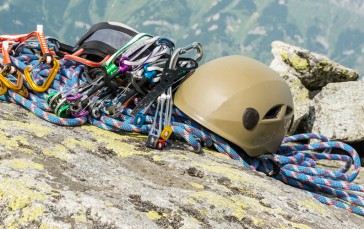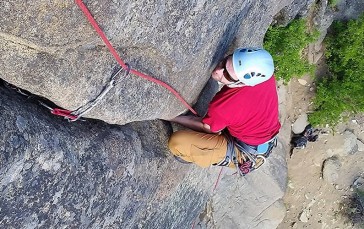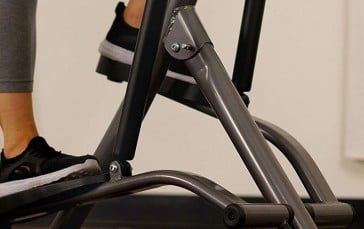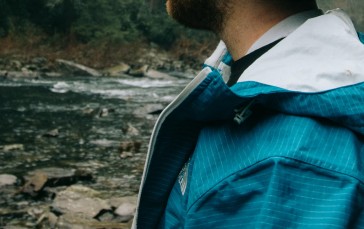Rock Climbing Gear & Equipment
Rock climbing is exhilarating, demanding, exciting, exhausting and rewarding. It’s also dangerous as hell if you’re not properly equipped. You might see videos of people climbing rock walls and think “I could do that”. And maybe you could. Maybe you could even one day climb the nose on El Cap. But you’re not going to do it right out of the gate. And the most important thing when you’re getting started is to make sure your gear, or lack of it, isn’t holding you back or compromising your safety. So with an eye on safety and with careful consideration given to performance and value here is our list of essential equipment choices every beginner should make. For the record, any of these also make great gifts for rock climbers.
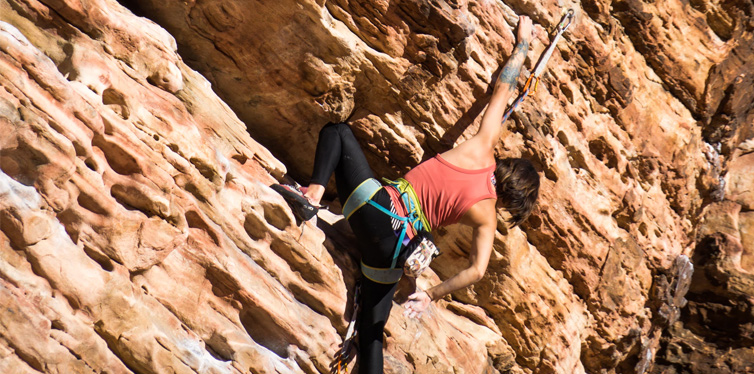
Quickdraws
A quickdraw is comprised of 2 non-locking carabiners connected by a sewn nylon sling. They’re used on both rock and ice routes to allow you to set protection quickly and move on. They come in various lengths but the most popular are 4 inches (10 cm) and 6 inches (15 cm). That’s the length of the sling only and doesn’t include the length of the two carabiners. Established rock routes typically have fixed bolts at strategic points from base to top and you use the quickdraws to affix your protection to these bolts. You’ll want to start with a dozen or so quickdraws of both lengths. This will provide you with that most valuable of commodities when you’re climbing: options. Once (if) you move on to more involved routes you can always pick up more.
Carabiners
Before the advent of the quickdraw climbers relied solely on carabiners to fix themselves to their protection. They still use them. Except that today many of the biners they use are integrated into the aforementioned quickdraws. But that doesn’t preclude the need for individual carabiners. You’ll still need a good locking biner for belaying and rappelling and the wise climber has a half dozen or so more at their beck and call to use as anchors, for setting top ropes and who knows what else. Carabiners are the duct tape of the climbing world. They’re versatility incarnate. Make sure you have a combination of locking and non-locking carabiners on your trad rack before ascending.
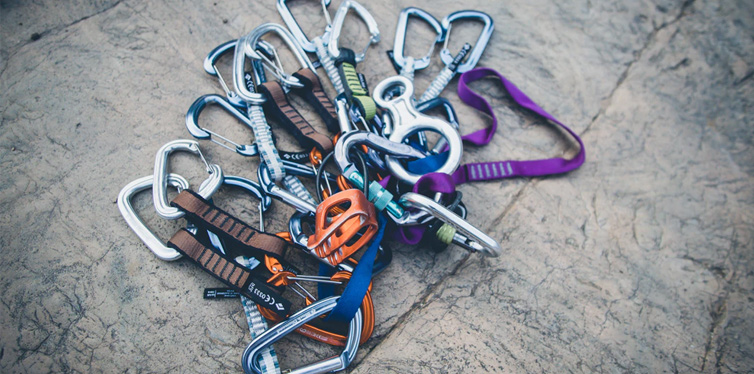
Climbing Shoes
You won’t get far without a great pair of rock climbing shoes. They define the relationship between you and the rock surface. And, just like with people, you don’t want to cultivate a dysfunctional relationship with your route, whether it’s in a gym or in Zion National Park. There are several things to consider when selecting the right climbing shoes. First is the arc in the sole. Essentially you have a choice between a neutral, (flat) sole, a moderate sole that features a bit of an arc and an aggressively downturned sole.
As a general rule the steeper the climb the more arc you want in the sole of your climbing shoes. If you’re just starting out you shouldn’t be trying to tackle anything to extreme so stick with a neutral, all-purpose type of sole. As far as fit is concerned, there’s also a general rule of thumb that applies. And that is, the more difficult the climb the tighter the shoes should be. Of course you don’t want anything that’s going to cut off your circulation. But if your foot can move around inside your climbing shoe the way it does in your running shoe it’s just not tight enough. And speaking of clothes, if you plan on climbing outdoors during the spring and fall you’ll also want to investigate Patagonia jackets. They’ll keep you dry and protect you from the cold wind.
A Harness
All the quickdraws, carabiners, altimeter watches and climbing shoes on the planet won’t do you much good if you don’t have some way to catch yourself in the event you lose your handhold or footing. That’s where the harness comes in. The harness fits around your waist and your upper legs and attaches you firmly to the rope via a robust locking carabiner. The harness then distributes the forces that are brought to bear in the event of a fall. There are different types of harness for different types of climbing. Most sport climbs, however, are limited to a single pitch, (sometimes 2), which means you won’t need to bring along a ton of heavy gear. As such, the sport harness tends to be light and have few gear loops.
Beginners won’t need anything more than a high-quality sport harness to get started. And that’s the case whether you plan on sticking to the rock wall at the gym or heading outdoors. You can pick up a more involved harness if you want, thinking that you’ll grow into it. But you’ll just be burdening yourself with extra weight and features you really don’t need at a time when you should be concentrating on making things as simple and easy as possible.
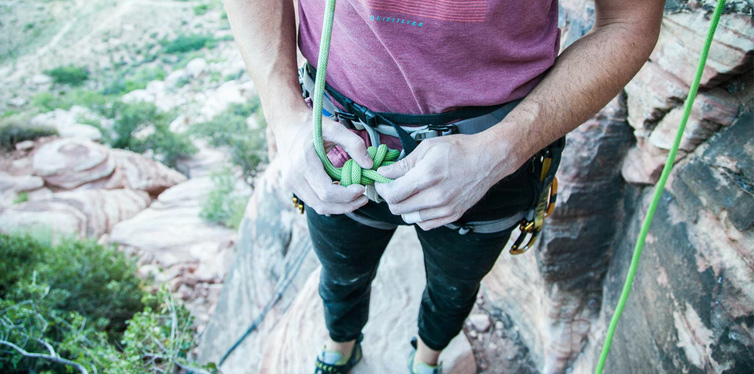
Rope
Some of the things you’ll want to keep in mind when selecting a climbing rope include:
- The weight – You don’t want to find yourself at that top of a pitch having to pull 200 feet of unnecessarily heavy rope up to your quickdraw. A good all-around sport climbing rope should be between 9.5 and 10.5mm thick. Any more and you’re weighing yourself down for no good reason.
- The length – The length is determined by the climb or climbs you plan on tackling. Most sport climbing ropes are either 50, 60 or 70 meters in length. If you only need 50 meters and instead buy a 70 meter rope you’re going to be lugging around a lot of extra weight.
- Dynamic v static – Make sure you get a dynamic rope and not a static rope. A dynamic rope with plenty of tensile strength will stretch to help absorb the force of a fall. A static rope is mostly used to lower gear or injured climbers and has a very little stretch to it.
- Weight capacity – Even a 150-pound climber can generate enormous forces when falling just 20 or 30 feet. The rope needs to be able to stand up to those forces. As such, a decent climbing rope will be rated to 24 – 30kN. That means from 5,400 to 6,700 pounds.
Chalk Bag And Chalk
Even minimalist climbers need a chalk bag. Alex Honnold, for instance, during his stunning free climb of El Capitan in 2017, had only 2 pieces of gear with him: rock climbing shoes and a chalk bag. That’s it. So if it’s good enough for him it’s good enough for you. Whether you’re climbing indoors or out chalk dries up any moisture on your hands, thereby allowing you to get a nice secure hold. There’s nothing high tech about chalk and its inclusion on your gear list is non-negotiable. So purge any silly ideas of climbing without it from your system and get a decent chalk bag and plenty of chalk to fill it with. Some chalk bags will attach to your harness while others will come with their own waist belt.
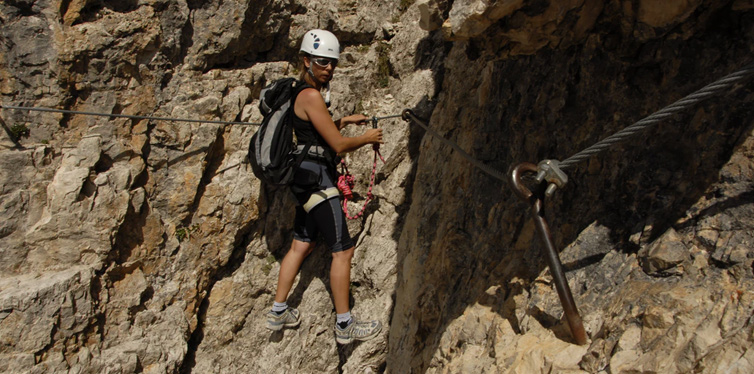
Helmet
A helmet isn’t going to save you if you’re free climbing and fall from a great height. But it might just prevent your head from being split open by a rock tumbling down from above. And that by itself is a compelling reason to invest in one. While few rock wall aficionados wear helmets (not a lot of loose rocks in the gym) their use outdoors – especially on long, involved pitches – is just a matter of common sense. Because even during a short fall you may wind up getting turned around and have your head make contact with the rock face. Today’s climbing helmets are lighter and stronger than ever. They’re also affordable which makes their inclusion on your gear list even more of a no-brainer.
Bouldering Crash Pads
Bouldering is currently enjoying some time in the sun. And why not? In many respects it’s a great way to introduce yourself to rock. It’s also a great way to gauge your conditioning and your level of enthusiasm. But, since it’s a form of free climbing, it’s also a good way to sustain your first significant climbing injury. That’s where bouldering crash pads come in. Purists will scoff but that’s what purists do. They scoff. If they’re not scoffing at crash pads they’re scoffing at something else. So let them scoff and get yourself some high-quality crash pads.
Of course, if you’re bouldering in the gym they’ll have plenty of crash pads for you (at least they should). But if you plan on engaging in some outdoor bouldering on real boulders you’ll need your own real crash pads. They vary in size, stiffness and thickness. And of course some cost more than others. But they’re essential gear for anyone engaged in this type of free climbing. Just remember that once you get above 20 feet or so the ability of your crash pads to protect you from injury diminishes pretty rapidly. So be realistic.


